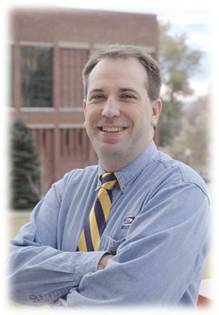University Communications and Marketing
MSU Billings professor brings National History Day to Montana
September 5, 2008
Contacts:
Dr. Tom Rust, Assistant Professor of History, 657-2891
Dan Carter, University Relations, 657-2269
Middle school, high school teachers encouraged to take part in program
MSU BILLINGS NEWS SERVICES — Author Robert Penn Warren once said: “History cannot give us a program for the future, but it can give us a fuller understanding of ourselves, and of our common humanity, so that we can better face the future.”
With that goal in mind, Dr. Tom Rust, assistant professor of history at Montana State University Billings, is embarking on a project designed to help elementary and high school students better understand history and prepare for the future.
It’s called National History Day, and is a nationwide program that is designed to
give elementary and secondary students an opportunity to gain some lifetime skills
and make learning fun. It also provides their teachers with some tools to engage students
and meet national educational standards. 
“It’s a huge program in other parts of the country,” said Rust. “We’re really lucky
to be able to get going here, especially with the educational mission of the university.”
In actuality, National History Day is not a singular day, but an experience. It’s a yearlong program that uses history to challenge students in grades 6-12 to improve their research, analytical and communications skills. Whether done individually or in groups, students select a topic and conduct research on it based on a broad theme which changes annually. This year, the theme is “Individuals in History: Actions and Legacies.”
Rust said that the themes are selected to stimulate not only interest in history, but encourage students to become more familiar with local resources. Search for primary and secondary resources for projects steer students to local libraries, newspaper archives, historical societies and museums. Many students also conduct oral history interviews, allowing the past to flow from the memories of elders in their families and communities.
Students then present their findings in research or creative papers, museum-style exhibits, original dramatic performances or multimedia documentaries. Students can then enter History Day contests in March 2009, with winners eligible to take part in the national contest in June 2009 in College Park, MD.
Rust’s role as Montana State Coordinator of National History Day, is to work with area middle school and high school educators to encourage involvement in History Day. By incorporating National History Day projects in the classroom curriculum early in the school year, both learning and teaching can be enriched, Rust said.
“It helps students refine their thinking and analysis skills, it balances academic integrity with projects and engages students in new ways with history,” Rust said. “Instead of rote memorization, they learn to analyze history and what it means.”
Rust worked as a judge at the 2008 national contest this past June and produced a video with interviews of students and teachers to promote the program in the Billings and the south-central Montana region. The subjects on his video talk about the value of digging into a topic and developing their own thesis about important historical events and characters.
In addition, Rust said, National History Day projects help educators meet national standards on historical thinking and language arts. And this year, Rust has a special offer to teachers. He will provide each teacher having a student enter the Montana National History Day regional contest in March a free CD containing over 2,000 World War I and World War II posters. The posters are perfect to make reprints for their classrooms and are provided royalty free. Rust said the collection of posters artistically captures and projects the feelings of anxiety, fear, determination, paranoia, anger, unity, spirituality, prejudice and pride of a world at war.
In 2008-09, the theme on “The Individual in History: Actions and Legacies” will encourage students to think in terms of how the combination of the right person and the right time in history can have a powerful effects. Whether inspiring or catastrophic, lives and decisions of certain individuals ignited changes that either remain today or are still remembered.
For teachers who want to know more about incorporating National History Day into their classroom, contact Rust at 657-2891 or at trust@msubillings.edu.
